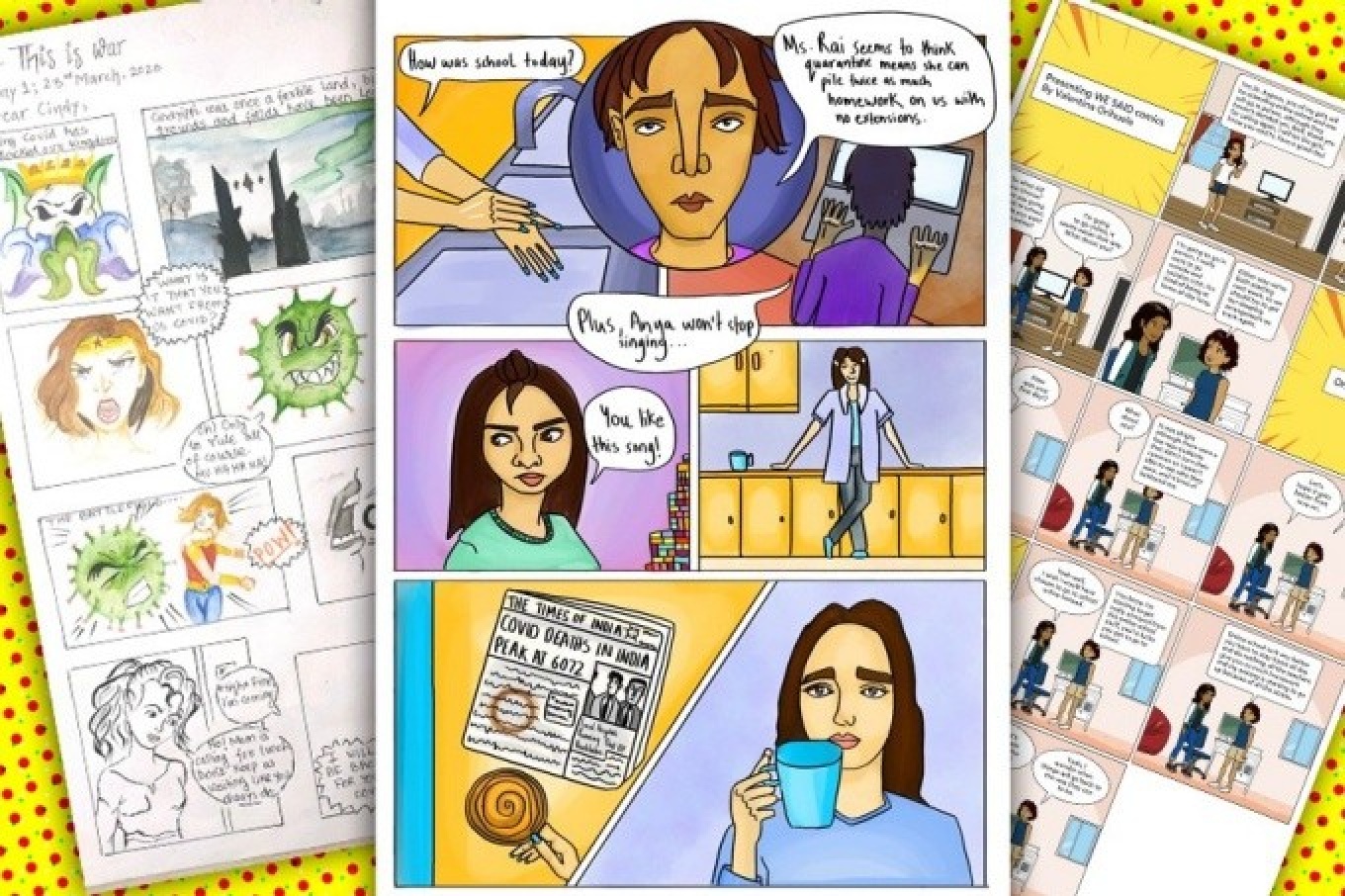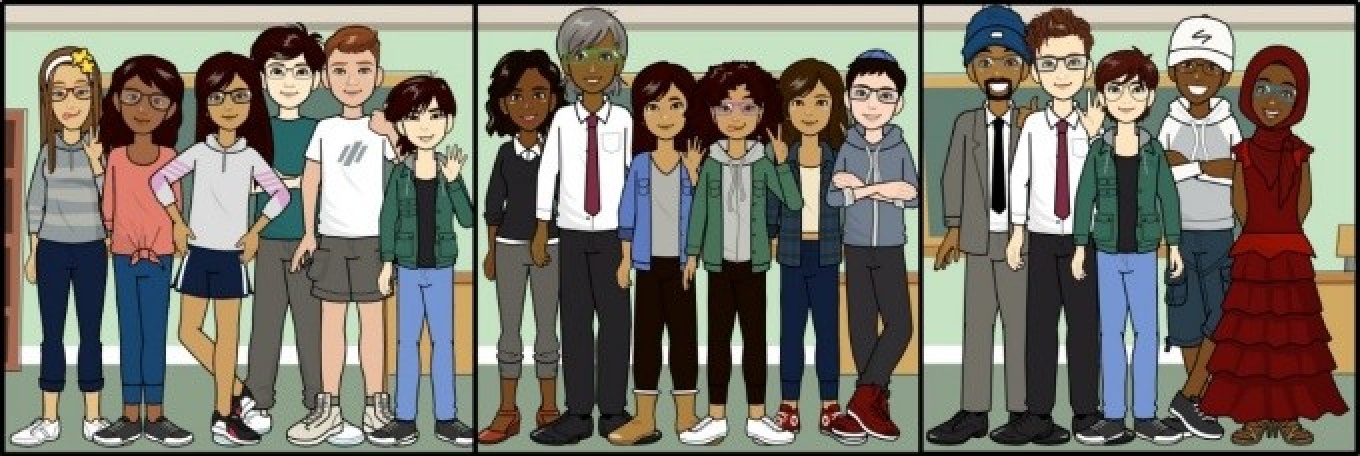

Students in the UB “We Said” program used comic books to express the impact of the COVID-19 pandemic on their lives and communities. From left: “Home Tales” by Saakshi Badoni of India, “Alternative Medicine” by Urmi Shukla of India and “Presenting ‘We Said’ comics,” by Valentina Orihuela of the U.S. and Mexico. (Images courtesy of the artists.)
Published December 8, 2020 This content is archived.
BY MARCENE ROBINSON
Students around world come together to create COVID-themed comics with UB program
A team of UB researchers used the power of storytelling through comic books to help high school students around the world better understand the impact of the COVID-19 pandemic.
The program, “Working for Educational-Equity: Scientists Artists and Institutional Design,” abbreviated as “We Said,” brought together students from the United States, Mexico and India to discuss problems connected to science, community and equity, and learn how to create graphic novels.
The free, three-week program, in July, guided students to create comics and explore how the pandemic impacted communities disproportionately. Some of the stories, online at the We Said website, explored students’ personal experiences. Topics ranged from inadequate access to health care to wealth disparity.
“Storytelling is a pathway to learning,” said program coordinator Sameer Honwad, GSE assistant professor of learning and instruction.
“A lot of cultures around the world, particularly non-Western cultures, use stories as a platform to think about and understand the complexities in our world. The social interactions around them build relationships between people.”
Over the past decade, graphic novels have become one of the fastest-growing categories in public libraries and other educational settings in the U.S., Honwad said.
“Comics are a well-known medium that young people can get excited about,” said Shakuntala Devi Gopal, a GSE doctoral student and program coordinator. “It’s an accessible art form that many of us grew up looking at, and the illustrations enable another layer of creativity and expression.”
The program’s team also included Ryan Rish, GSE assistant professor of learning and instruction, Jessica Scates, administrative coordinator in the UB Community for Global Health Equity, and Anthony White, GSE research assistant and adjunct instructor.

The instructors and students who took part in the "We Said" program.
Building connections with stories
The project drew on Honwad’s research interests—creating inclusive learning environments and using storytelling platforms.
He initially designed “We Said” so that a Buffalo high school could use graphic novels to explore local food systems. As the pandemic unfolded, the project transitioned online, with a new focus on COVID-19’s community impact.
To find the 14 student participants, Honwad reached out to university contacts in the U.S., India and Mexico.
The program’s first week focused on conversations about the students’ pandemic experiences. They discussed inequalities that affected them and their communities, including a lack of access to technology and health care, and unemployment and wealth disparity.
The students also talked about the protests for racial justice in U.S. When learning about inequality in other cultures, the participants from the U.S. and Mexico were shocked to discover that India had a caste system, Honwad said.
“There are a lot of similarities in how powerful individuals oppress people who have lower economic status. In the U.S., it revolves around race,” he said. “In India, equity revolves around caste: The Dalit are deemed low caste members and have been oppressed for centuries.”
As the students developed on their stories, they learned comic book design from Rish and guest speakers, who included several comic book artists.
Eventually, they divided into groups, which focused on one of three areas impacted by the virus: life at home, school and relationships.
“The students enjoyed connecting with people in their age group that they would not have met otherwise,” Gopal said. “The experience also allowed them to work creatively. Some of the students don’t have opportunities for that type of expression.”
The researchers plan to apply for grant funding to expand the project. In future iterations, Honwad hopes to foster student conversations about how colonialism and imperialism impact cultures. “How do you build solidarity between people who are in parallel situations in terms of oppression across the world?” he said.
Tuesday News Briefs feature the stories of the Graduate School of Education faculty, students and alumni who are engaged in their communities and making an impact through their hard work, dedication and research initiatives. If you have a story to share, please email us with the details for consideration as a future news feature.